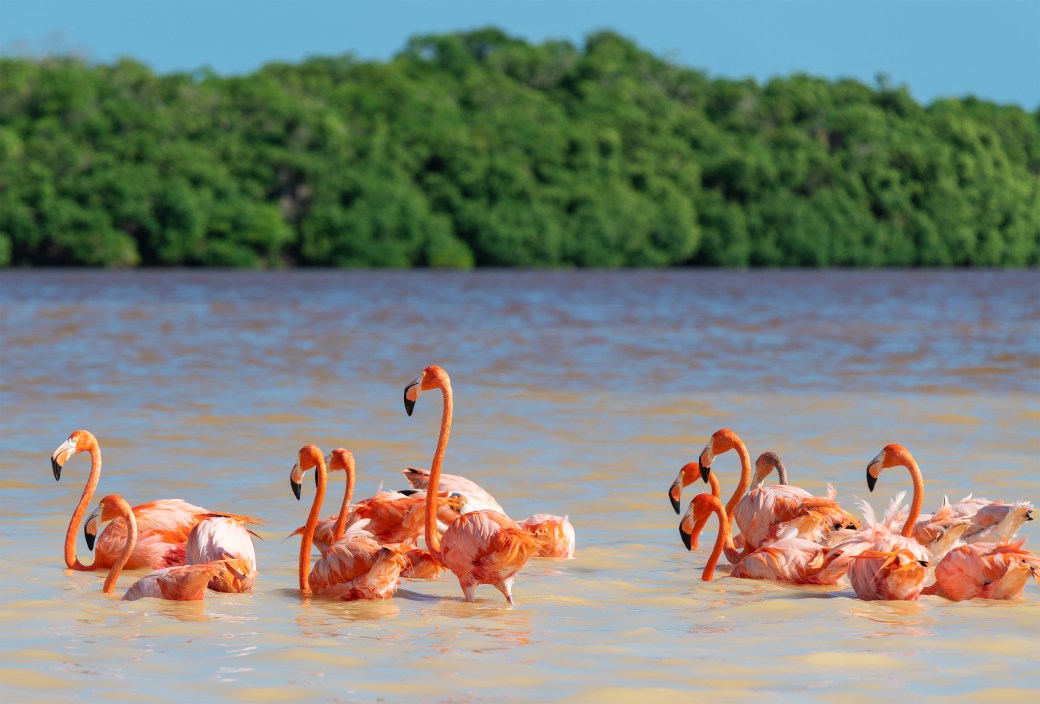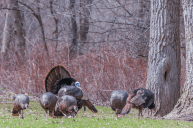At the beginning of September, bird watchers at Long Lane Pond, 170 miles west of Philadelphia, spotted a wildly rare site: two flamingos wandering the shore. Three weeks later, roughly 700 miles away, a small flock of five landed on the shore of Lake Michigan, drawing so many observers that parking restrictions were put in effect in the area. After some hours, the birds departed, only to be seen days later wading in the Wisconsin River.
American flamingos are found mainly in the Yucatan Peninsula and in Cuba, and cold-weather states like this aren't where we normally expect the pink-plumed tropical birds to vacation. And, in fact, it was the first time flamingos had ever been seen in the wild in Wisconsin. But Pennsylvania and Wisconsin were just two of nearly a dozen U.S. states that reported the unexpected and unprecedented visit from the tropical bird this past fall.
This is a trend we're seeing across wayward birds more broadly, Chad Witko, senior coordinator of avian biology at the Audubon Society told Wide Open Spaces. "We're picking up on patterns of vagrancy more regularly."
Though Florida was once among the bird's native habitats, flamingos were hunted to near extinction in the early 1900s in the Sunshine State. They've rarely been seen in the United States since.
That is, until Hurricane Idalia tore through the Carribean and Southeastern U.S. in late August.
Now, Flamingos have been spotted in at least 11 states—many for the first time in living memory or at all—including the Carolinas, Tennessee, Texas, Ohio, Kentucky, once again, Florida.
So, while we haven't had flamingos on the U.S. mainland for practically a century, now that they're here—are flamingos here to stay?
Flamingo Sightings in the United States—and Hurricanes
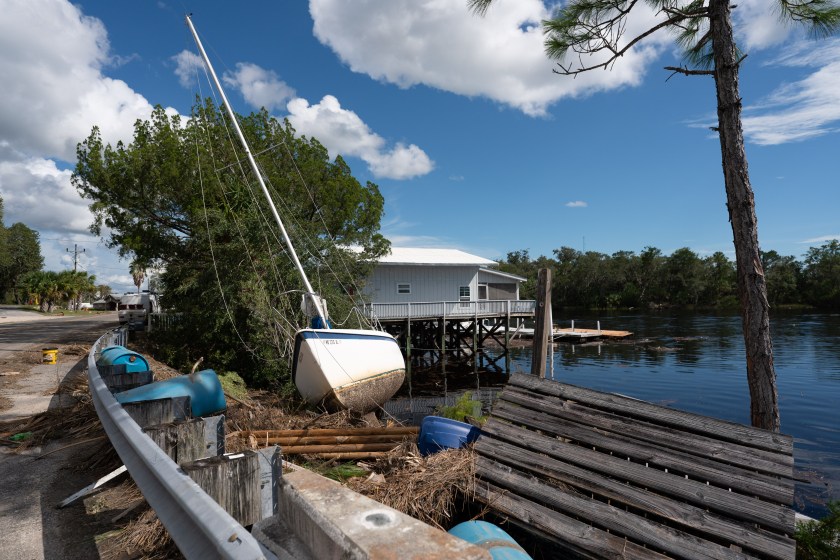
Getty Images, Sean Rayford
Though rare, flamingo sightings in the U.S. have been documented by associates of the ABA. Historical records show flamingo sightings dating all the way back to 1912 across Florida, Texas, Tennessee, Louisiana, and, more recently, Missouri. But the birds' arrival in Pennsylvania, Ohio, and Wisconsin marks the northernmost flamingo sightings in history.
These recent visitors share a common thread with wayward flamingos past: hurricanes. Nearly every recorded flamingo sighting dating back to 1912 was preceded by a hurricane's landfall, making the Idalia flamingos the latest in a pattern spanning more than a century.
Migrating tropical birds are often swept up in hurricane winds and thrown off course, scattering them to unexpected locations, in a phenomenon known as "fallout." A fellow wading bird, the roseate spoonbill, has similarly been spotted in unexpected locations, including Green Bay, Wisconsin.
But whereas prior flamingo sightings mainly involved birds flying solo in near-tropical states, the Idalia flamingo sightings are much more far-flung and, in Florida's case, often include groups of ten or more birds. One sighting in Lee County, Florida, even includes 51 flamingos.
So Do Flamingos Live in the U.S. Now?
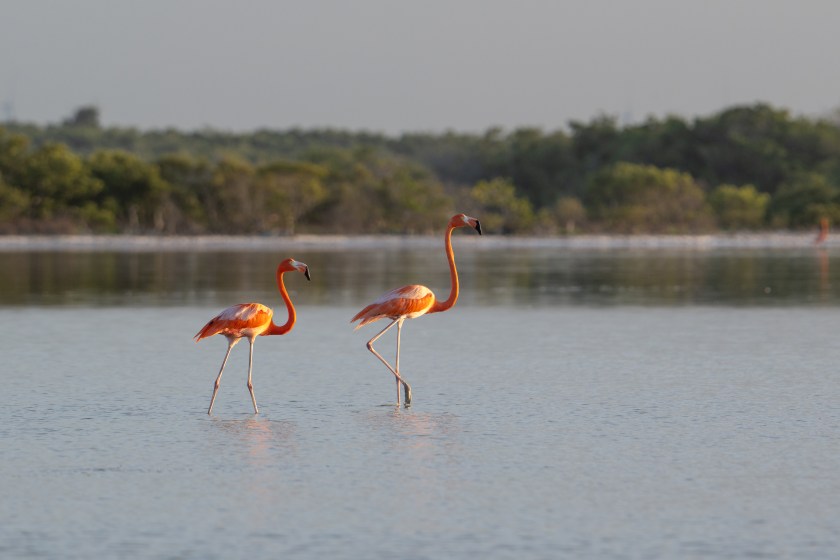
Getty Images, ilyaska
The American flamingo's return to Florida, one of the American flamingo's original habitats, is especially notable. After their near-extinction in the early 1900s, flamingos for the most part could only be seen in captivity in the Sunshine State. The ditching and draining of the Everglades made matters worse, resulting in the destruction of many wading birds' homes until restoration efforts kicked off in the year 2000.
Might the American flamingo be making an official homecoming in the Sunshine State? And could it possibly be scoping out new homes up north?
"These birds aren't really adapted for the winter," Witko says, speaking of Wisconsin in particular. "Maybe in a changing climate, they could persist a little longer. But long-term, it's not where they're adapted to be."
In other words, don't hold your breath for flamingos breeding in the Great Lakes—but do expect more visits like this in the future, from flamingos and other non-native birds, too.
Changes In Other Bird Patterns
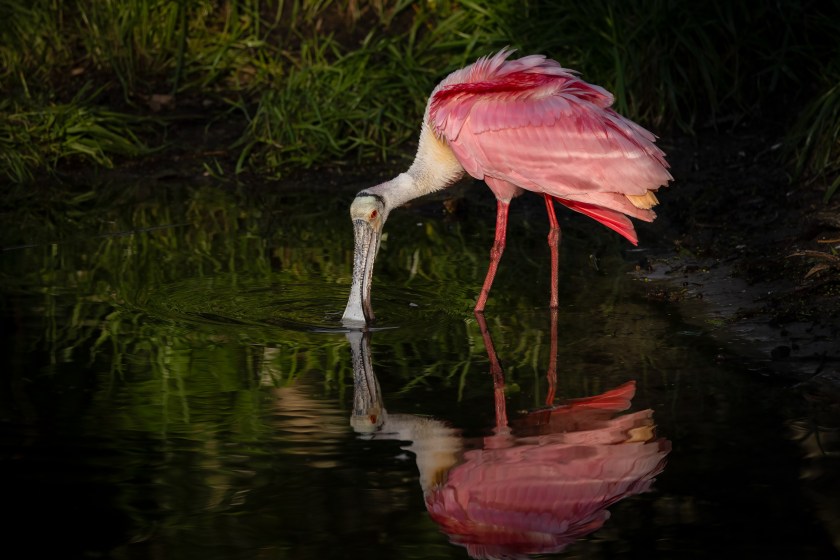
Getty Images, Harry Collins
As an avian researcher based in Vermont, Witko has observed European birds arriving in the Northeast from Europe. With the impacts of climate change potentially leading to increased frequency or severity of major storms, it's not surprising that these things are happening. "We're probably going to see these types of events more regularly," Witko adds.
In addition to flamingos, other tropical species not native to the U.S.—such as the roseate spoonbill and the red-legged honeycreeper—have been spotted stateside in recent years as well.
Most notably, the limpkin, another warm-water wading bird, has made "remarkable expansions" in the U.S. in recent years. But, with its brown-and-white plumage, the limpkin is somewhat more innocuous than the flamboyant flamingo. "It's not hard to miss a big, pink bird in front of you," Witko remarks.
In other words, the flamingo can be seen as a hot-pink indicator of a once-subtle pattern.
But while the limpkin expands its reach throughout the southeastern U.S., the American flamingo, for now, is almost certainly headed back to its breeding grounds in the Caribbean, landing in comfortable stopovers like North Carolina's Outer Banks and following the coast back south.
Until the next major storm sends a few our way.
READ MORE: Local Waterways Are Getting Destroyed by Enormous Pet Goldfish
